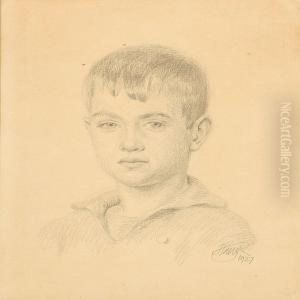Nils Mollerberg Paintings
Nils Möllerberg was a Swedish artist and sculptor born on October 5, 1892, in the town of Helsingborg, Sweden. His artistic career was marked by a distinctive style that often fused elements of the traditional with a modernist approach. Möllerberg's work was significantly influenced by the changing artistic trends of the early 20th century, as well as the cultural and social dynamics of his time.
Möllerberg studied at the Technical School in Helsingborg before moving on to further his education at the Royal Swedish Academy of Fine Arts in Stockholm. There, he honed his skills in painting and sculpture, developing a strong foundation in the classical techniques that would underpin his later experimentation with form and content.
During the 1920s and 1930s, Möllerberg became increasingly interested in the human figure, a fascination that would remain central to his work throughout his career. He sought to capture the essence of the human condition, often depicting his subjects with a sense of introspection and depth. His sculptures, in particular, are noted for their expressive qualities and the skill with which he manipulated materials such as bronze and stone.
Möllerberg's work was not confined to sculpture alone; he was also an accomplished painter, although it is for his three-dimensional works that he is most remembered. Throughout his career, he exhibited widely, both in Sweden and internationally, and his work was well-received by critics and the public alike. He was a member of the Royal Academy of Arts and received several awards and honors for his contribution to Swedish art.
Despite his success, Möllerberg's life was not without its challenges. The economic hardships of the interwar period and the tumultuous political climate of the time influenced his output and the reception of his work. Nevertheless, he continued to create art that was personal, evocative, and often reflective of the human spirit in the face of adversity.
Nils Möllerberg passed away on June 7, 1954, in Stockholm. His legacy endures in the form of his artwork, which can be found in various museums and collections across Sweden and beyond. Möllerberg's contribution to Swedish art is recognized for its emotional depth and technical mastery, and his works continue to be studied and appreciated for their unique blend of tradition and innovation.
